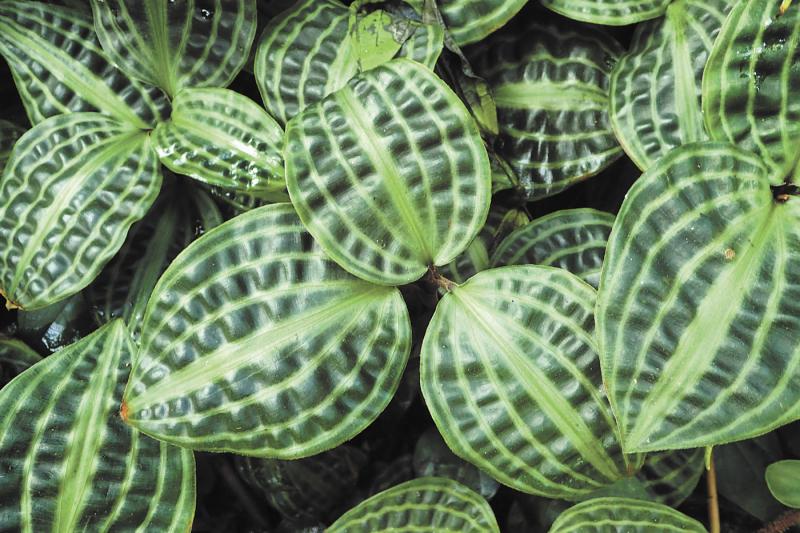To prove that his new line of men's suits was wash and wear, New Orleans clothier Joseph Haspel waded into the surf in Boca Raton, Fla., bragging that his 3-piece suit would dry in 15 minutes and be ready to wear to dinner that very evening. It worked, thanks to the puffy, lightweight cotton cloth used to make the suit. The puffy cloth we know as seersucker is perfect for hot, humid days that surely are ahead of us. Because of those tiny bumps, the fabric does not cling to the skin when worn, allowing heat to dissipate and let air circulate to cool us off.
Seersucker is wildly popular for summer wear, which makes sense because seersucker originates in the hot climate of Persia, where the light, striped linen fabric was called “shir u shakar,” which means “milk and sugar.”
A fitting house plant is Seersucker plant (Geogenanthus poeppigii), with leathery leaves striped in light and dark green, and each leaf puckered like seersucker. The bottoms of the 4-inch-long leaves are a deep purple. Plants are often available at local nurseries and garden centers or by mail from specialty greenhouses such as Logee's (www.logees.com).
In its native Amazon, Seersucker is an understory plant, one that grows in the shade of larger plants. Because of this, it can get by with low light and is OK with occasional dryness. The variegated leaves will brighten up any room. You can also grow them in a terrarium. Try mixing them in with other foliage plants such as begonias or pothos. Seersucker also does well in a hanging basket or a window box.
When Seersucker is grown in a pot, you will have to water it more often. Choose a spot with indirect sunlight and away from drafts. Try to keep the soil moist but not soggy or continuously wet. When the plant is actively growing in spring and summer, you can feed it with a good organic liquid fertilizer at half strength. As with most house plants, an occasional misting helps.
Average potting soil will be fine, or use soil meant for African violets. Best is a soil pH between 6.1 and 7.5, although this plant doesn't seem to be picky about soil acidity. Seersucker plants are not poisonous; they are safe around pets and children. Seersucker plants are seldom bothered by disease or insects.
Because they rarely flower or set seed, you can take stem cuttings to grow new plants. Take cuttings in spring when the plant is actively growing. Choose a short stem with at least two leaves. Treat the cut stem with rooting hormone powder and plant it in quick-draining soil mix that contains sand. You may even be able to root it in plain water.
To hurry up summertime, try drinking a mint julep in a spot surrounded by indoor palms, and include a seersucker plant to match your lightweight suit. You and your seersucker plant will both be dry and spotless in time for dinner.























































